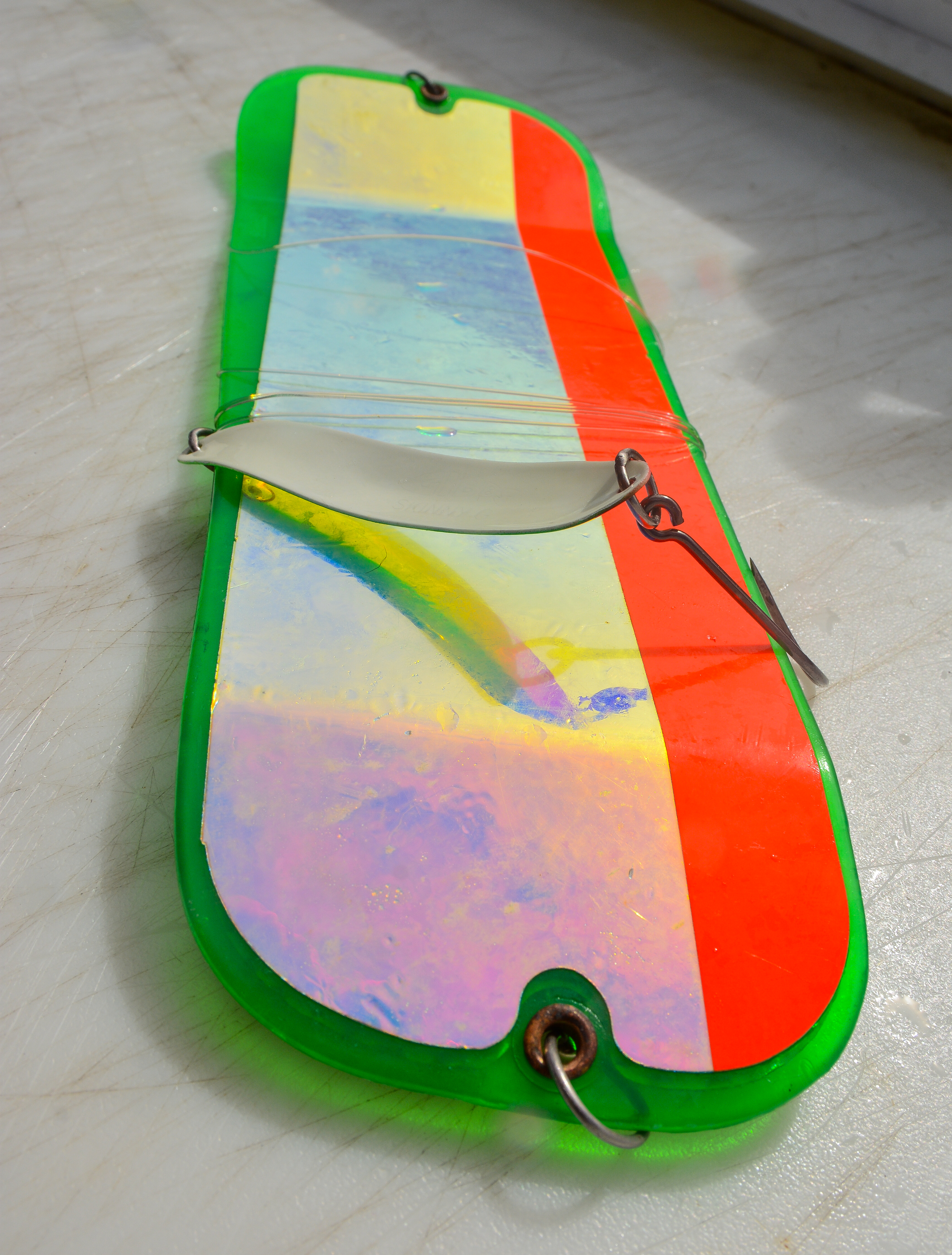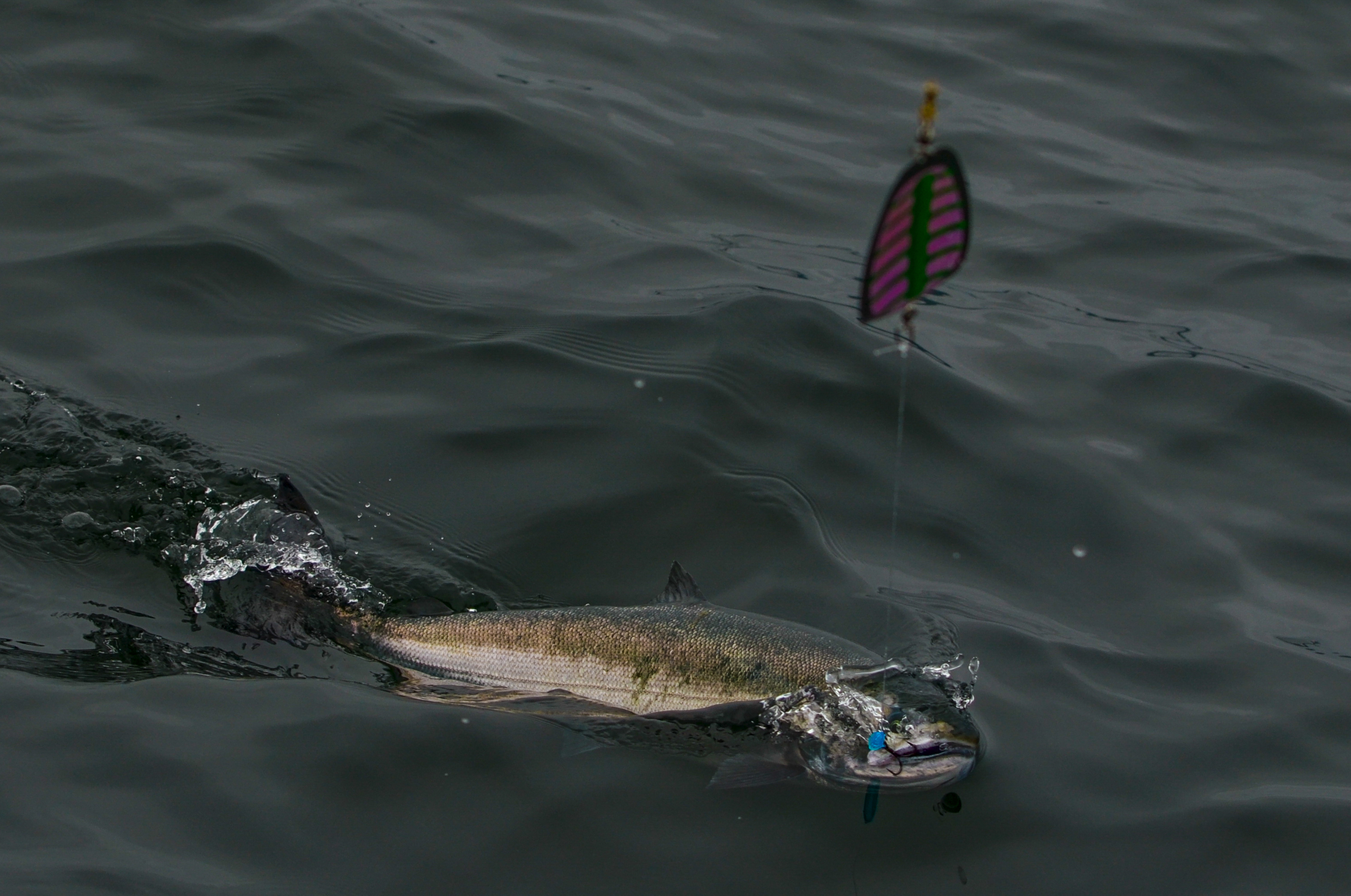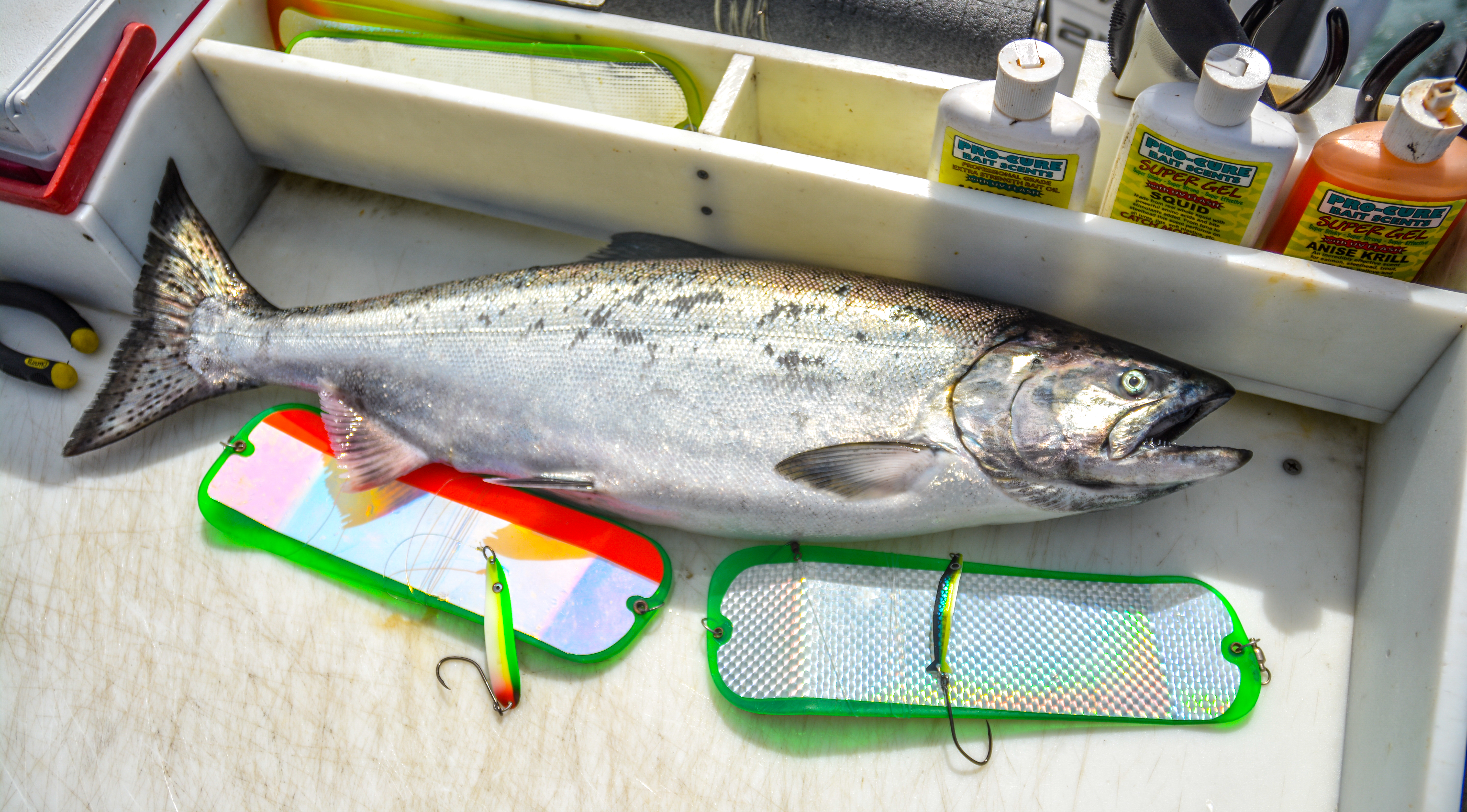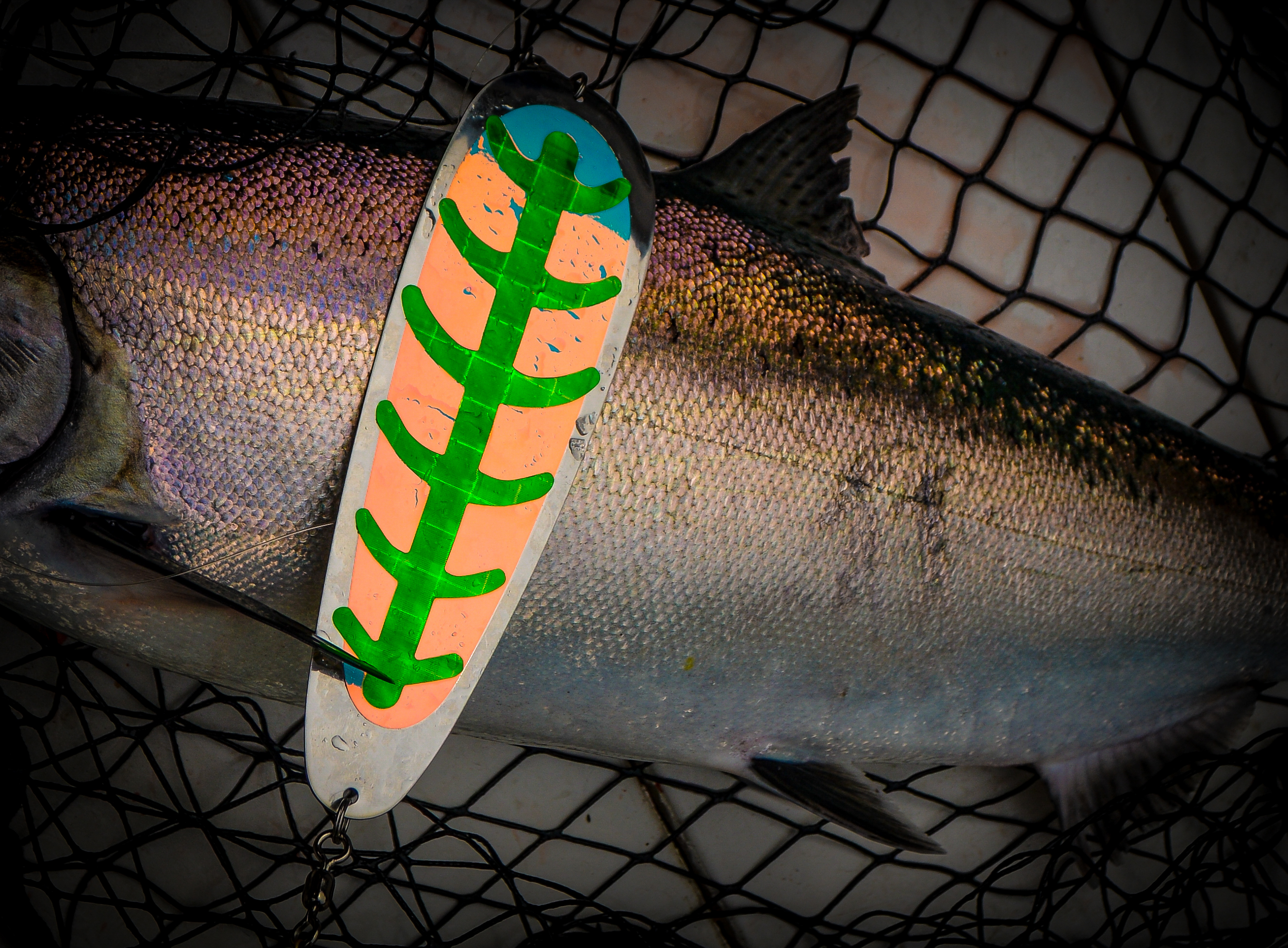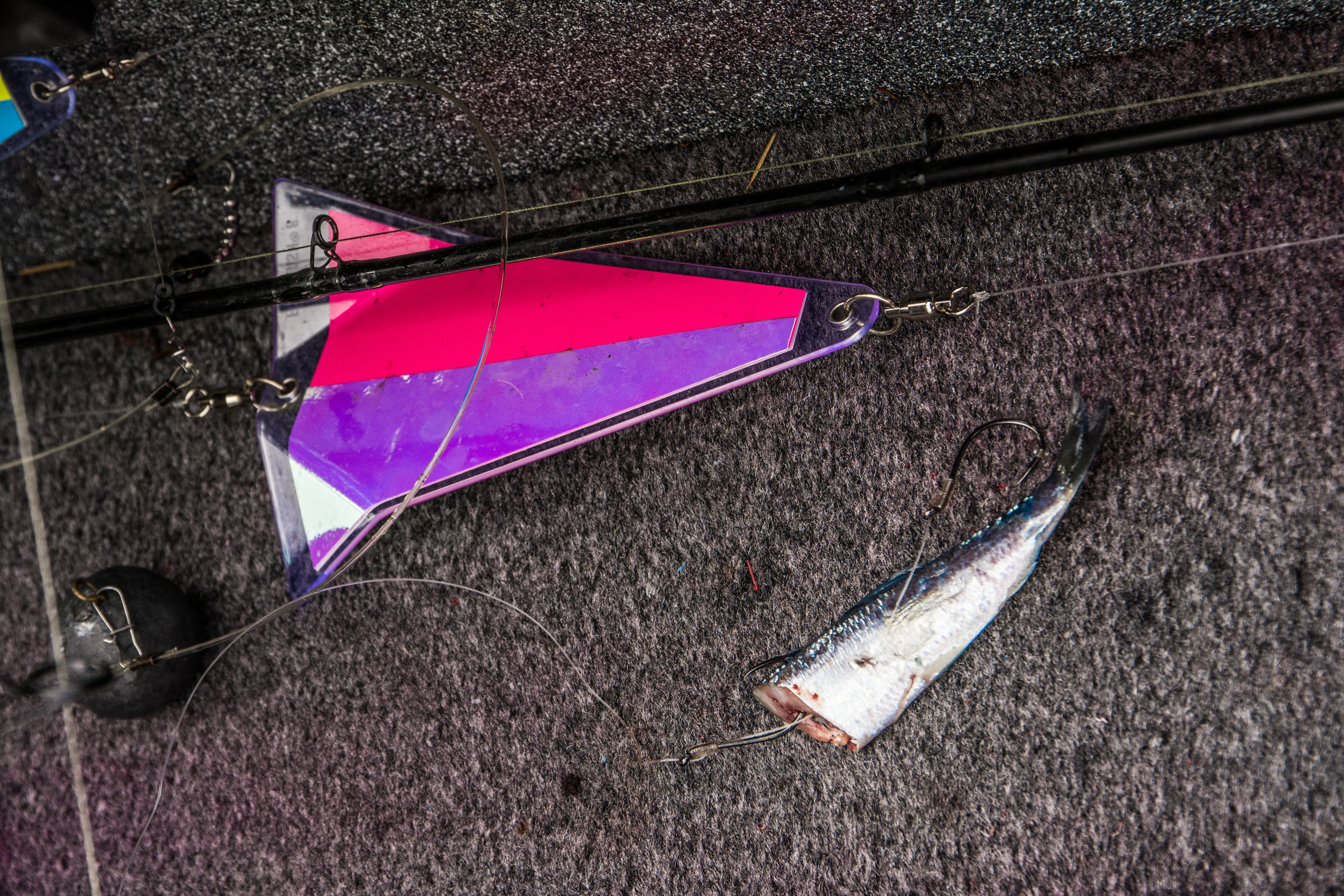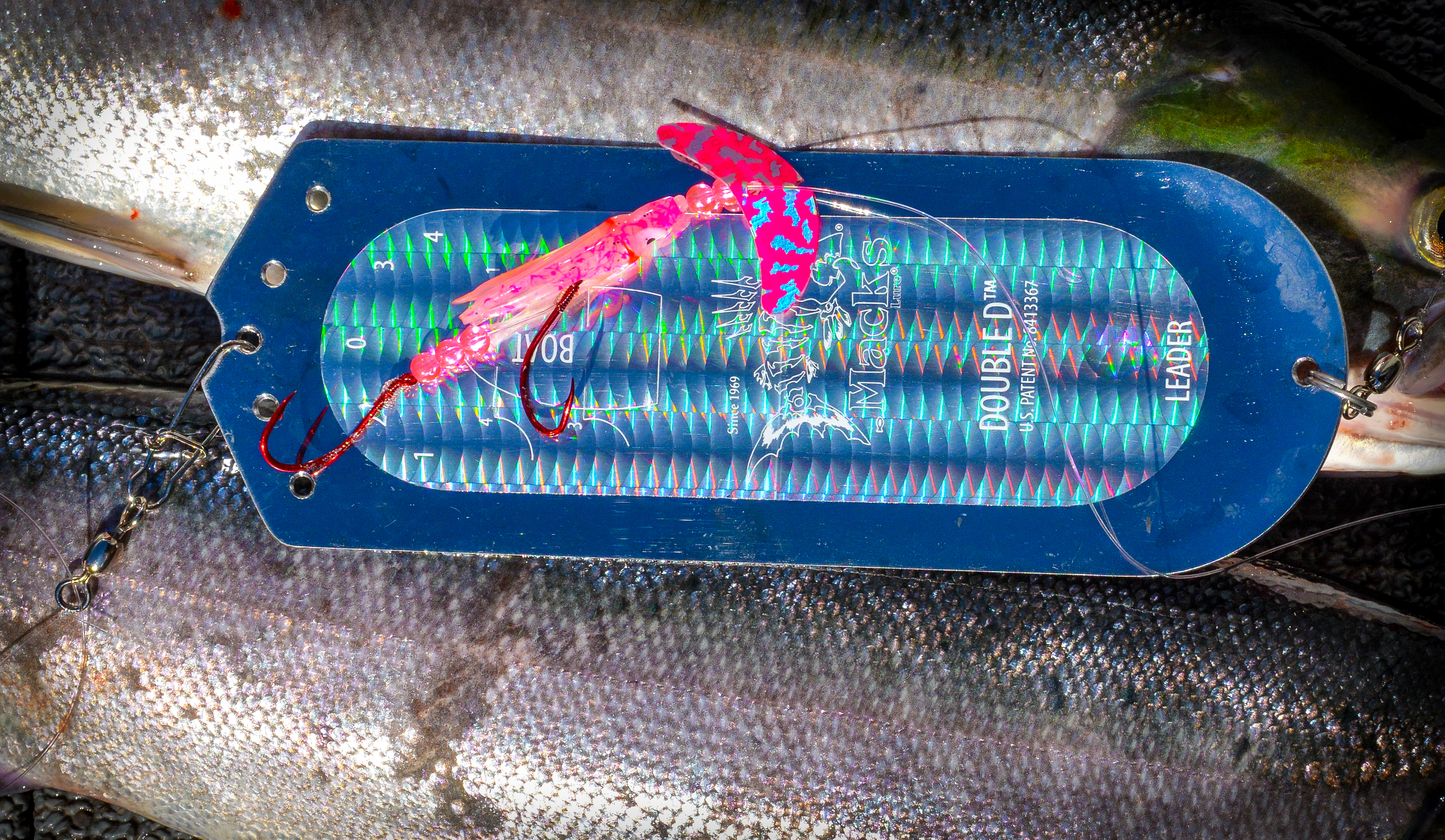Search
Latest Articles
Dodgers and Flashers
by By Jason Brooks, July 22, 2021
By Jason Brooks
Standing in the flasher and dodger isle at your local sporting goods store can cause some confusion if you don’t know which ones to use and how to use them. Flashers, in-line and standard, sizes, colors, lighted and UV finishes make it hard to know which ones to buy. Then there are dodgers and are used in a different way than flashers. It can all be so confusing but if you know how they work and when to use them they will help you catch more fish.
Dodgers versus flashers, and what does this really mean? Both are used to cause a “flash” in the water that attracts salmon. Salmon are schooling feeders, meaning they know that when they see a flash of a salmon aggressively chasing prey that there is food in the area and come to investigate. Both the dodger and the flasher mimic this flash of a feeding salmon. However, they do it in different ways, some will also impart action on a lure while others don’t.
The dodger does what its name implies and “dodges” back and forth. A flash of light is given off of the reflective surface but it also causes the bait or lure to jerk suddenly back and forth giving it an appearance of a bait trying to evade the predator. When using a dodger, it is best to realize that the leader length and stiffness is part of the presentation. An example is Sockeye fishing. This past summer I was fishing the famed “Brewster pool” for Sockeye and used a 8-inch Mack’s Lure “Double D” dodger with an 8-inch leader to a small clear pink UV hoochie skirt. The leader was twenty-five-pound monofilament, not because the fish were large; in fact Sockeye are one the smallest of the five Pacific salmon species. The stiff leader was needed to impart action onto the hoochie skirt. It looked like a small shrimp being chased by another Sockeye, which is also why it was important to use the 8-inch dodger and not a larger one. The Double D is also unique because it has offset holes and when trolled it will “kick out” to one side and increase your spread of lures as you troll.
When using a dodger be sure to use the right lure. A spoon or a hoochie skirt (also known as a squid skirt) are most popular as they can have action be imparted onto them and be effective. A cut plug herring or an anchovy with a hood is best used with a flasher as they have their own action by design and the dodger can interfere with the natural presentation you are trying to mimic of a swimming baitfish.
Speed control is important when using a dodger and keep in mind these are used for a “slow” presentation. Back to the Sockeye fishing; the dodger is best used at less than one mile per hour and for Chinook or Coho up to two miles per hour. There are dodgers designed to be fished at higher speeds such as the “Sling Blade” which is an elongated teardrop design. Going too fast will cause the dodger to spin and not work properly. You need to take into account currents and tides as well, especially if you are going “uphill” or against the current. When tying on the dodger it is not as imperative to use multiple swivels but one at the front and one at the rear will help with line twist when a salmon grabs the bait and the fight is on.
Flashers are a bit different, and even by design there are a few different kinds. Starting with the standard 11-inch flasher. This attractor makes a large circle as it is pulled through the water and by doing so it gives off flash and the appearance of commotion that causes the salmon to come over and investigate what it going on. Many tackle companies are now making flashers with a UV finish that seem to “glow” in dark waters. And ProTroll, a company synonymous with flashers has one that incorporates a water activated flashing light. All of this is to increase flash and bring salmon over to your bait. Flashers are best used with a long leader from 36 to 60 inches depending on bait size and type. A cut-plug herring is probably the most widely used bait behind these flashers but spoons also work as well as anchovies. Again, watch your speed as you need to be going fast enough to cause a complete rotation but too fast will cause severe line twist. To keep that line twist to a minimum be sure to use quality ball bearing swivels at the front and back of the flasher as well as another bead-chain swivel halfway down your leader.
In-line flashers such as Yakima Bait Company’s “Big Al” or those by ProTroll, KoneZone, Short Bus and other companies seem to be an attractor all of their own. With their popularity increasing each year to the point where the states of Oregon and Washington almost banned them during a recent Buoy 10 fishery. This attractor is just that, purely an attractor, as it adds flash but does not impart any action on the lure or bait. This is why they are best used with baits such as cut plug herring, anchovies with hoods, or lures such as spinners, Brad’s Superbait or Cut-Plug Superbait or Yakima Bait Companies new SpinFish. Another lure to try behind the in-line flasher is an apex or even a “K” style plug such as Kwikfish, Flatfish or Killerfish. Color seems to be the deciding factor when it comes to the in-line flashers with chartreuse and a hot pink being most popular. Don’t overlook gold, silver, or metallic red as they are also great for water that is off color and has low visibility.
When using the in-line flasher be sure to check the edges for any nicks as they can cut your leader or mainline if a twist occurs. Most come with quality ball bearing swivels already attached to both ends and make sure they are working properly. It is also a good practice to use a 6 bead-chain swivel halfway down the leader which is also long compared to leaders used with dodgers. Most leaders for in-line flashers are again 36 to 60 inches.
Mack’s lure came out with two new flashers last year that have a unique feature. They come apart and you can put scent right inside of them. The first is the triangle UV ScentFlash which is an in-line style flasher that not only adds flash to attract fish but also puts out a huge scent column thanks to the fins and rotating action. The other flasher is the UV Paddle ScentFlash which is a standard 11-inch flasher with a removable fin. This flasher imparts action on your lure or bait and again allows you to use additional scents and make a large trailing scent column to draw salmon to your lure. The removable fin adds stability but I had the chance to use these new flashers a few years ago when still in the testing phase. Halfway through our weeklong trip in British Columbia we lost the removable fin, but still caught a lot of fish. The flasher had more of an oval rotation than a circle and sometimes something different is all it takes to entice the bite.
Rigging the dodger, flasher or in-line flasher also differ depending on which one you are using. All three can be easily used on downriggers and pretty much all used the the same way. But you can also use the attractors with a sliding weight system if you don’t have downriggers or the location where you are fishing isn’t a good fit for downriggers such as the lower Columbia river. The biggest difference is that for in-line flasher you can run a sliding weight system with a dropper-which will allow you to drag the weight on the bottom and keep the bait in the “zone”-or a sliding weight without the dropper leader. The slider can bump right up against the in-line flasher or you can use a secondary leader and have it a foot or two away from the slider.
For standard flasher and dodgers there needs to be a space between the weight and the attractor as both impart action on the lure. A secondary leader is your best option. Have the slider on the mainline and a barrel swivel, then a 36 to 48-inch leader of heavy monofilament to another swivel. Use a duo-loc or McMahon snap to attach the dodger or flasher and then your standard leader to your bait or lure. This will allow your dodger or flasher to work properly without the dropper weight hampering the action. Knowing what the difference is between a dodger and a flasher and even the type of flasher will help you catch more fish. And knowing how to properly use them is the most important part of trolling for salmon. Now you can head to the water and know which one to use, and how to use it.
PHOTOS:
#1 – Classic 11” flasher with a spoon
#2 – A beautiful chinook fell for this sling blade set up
#3- Flashers and thin blade spoons are a deadly combo
#4- Slingblade
#5 – Inline flashers are growing in popularity because they work!
#6- Mack’s Double D has a unique design to allow sideways motion
